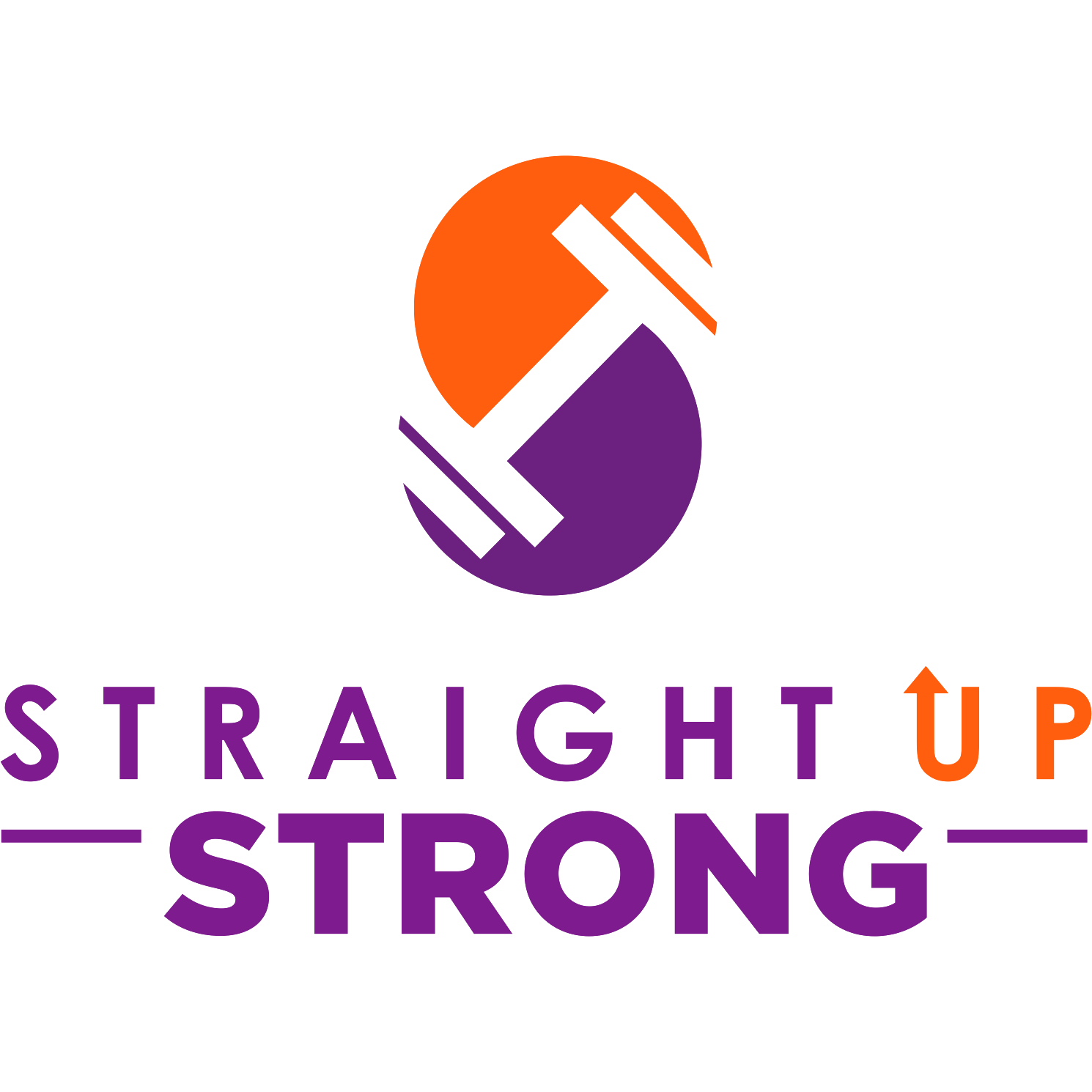Importance of Strength Training and How to Get Started!
Why bother to lift weights if you’re not chasing an aesthetic change (i.e.: weight loss or muscle growth) or a performance goal (i.e: powerlifting competition)?
Because strength training allows us to be strong for life.
The best way to prevent injury and prevent aches and pains is to be(come) strong and the best way to be(come) strong is to always be challenging your body with load. And that is where strength training comes in.
As we age, starting in our 30’s, we begin to lose muscle mass at an average rate of 10% per decade and then accelerates to an average rate of 15% after 50! This loss of muscle tissue as a natural part of the aging process is called sarcopenia.
In addition to sarcopenia, osteopenia, low bone density and osteoporosis, the loss of bone mass, are other conditions to be aware of. After about 30, bone breakdown happens faster than bone rebuilding which then leads to lower bone mass. When our bones are less dense, we are more likely to suffer a fracture after a fall. According to the Cleveland Clinic, 1 out of 2 women and 1 out of 4 men over the age of 50 will experience a fall that results in a fracture related to osteoporosis.
Why should we care? Because less muscle and bone mass and less strength means an increased risk for falls, injuries from said falls and complications from those injuries.
While walking, cycling and dancing are great ways to increase our cardiovascular health, the missing link for many folks, especially women over 40, is a consistent strength training routine.
Strength Training:
Helps to prevent bone loss and some studies are showing that we can actually reverse losses by rebuilding bone density. Likewise, resistance training helps to help maintain and build muscle mass as well as strength.
Increases balance and coordination, mobility and flexibility. A strong(er) core supports your stability and balance as well as improves your alignment.
Boosts moods and increases body image and confidence. Lifting heavy shit makes you feel like a total badass. Feeling the progress strength and power wise
Potential for increased brain health and cognition; especially for folks over 55.
Decrease risk of injury from other activities such as running. Strength training strengthens ligaments, tendons, cartilage etc that are common injuries for athletes and weekend warriors. In addition, a routine that is specifically designed to help balance out imbalances caused by the use of some more muscles more than others during a sport or activity by strengthening the weaker muscles. For example, runners tend to have weaker glutes than quads so incorporating exercises to strengthen the glutes can help to prevent injuries and discomfort. Oftentimes, knee pain is actually related to mobility or biomechanics of our hips or feet! Working with a professional who can assess your movement and patterns of movement and then design a personalized plan to address your specific needs can be incredibly beneficial, especially if you are prone to aches, pains and/or injuries, sprotes related or everyday life related!
Decreases aches and pains, including ones related to arthritis.
OK! I want to get started, but how??
First step is to pat yourself on your back for acknowledging that you want to and WILL start!
Second is to be honest about your time, schedule and potential barriers or obstacles that can pop up. What is most important, honestly, is consistency. If you work 40 hours a week, commute an hour both ways to work and have 2 kids, an hour a day, 6 days a week might feel and even be impossible to stick to. That’s ok! You don’t have to do strength training 6 days a week for an hour in order to reap the benefits of training listed in the above section! For real!
For our clients and members starting or restarting (even intermediate peeps seeking general wellness and strength benefits), we recommend 2-3 days a week of 30-45 minute full body sessions. This is 30-45 minutes including warm up and stretch!
Decide where you’ll be training, the gym or at home. This is important because you’ll next be deciding on a structured strength program to guide you. You’ll need to know what equipment you have access to before you decide that! For example, if you’re going to train at home and have dumbbells but then invest in a program that utilizes barbells, you’re going to have a hard time.
If training at home, determine where your workout area will be and what type of space you have for equipment. You will ideally have access to at least 2 sets of weights (a lighter set and a heavier set) to start out with. Resistance bands/loops are also a nice bonus to have! A bench or step is also super useful as you get started as it can be used to assist in push ups, planks, squats and more!
Next is to get yourself an actual program, designed by a professional trainer. Youtube and the interwebs are a wealth of workouts, but piecemealing together random workouts will likely lead:To boredom from doing the same workouts over and over again
To lack of progress due to not applying the principle of progressive overload (adding progressive stress from weight, reps, time etc)
To frustration from having to decide on which workout to try.
To the chance you are utilizing workouts that are too challenging or more likely not challenging enough for you.
Now, Straight Up Strong does have a Youtube channel (check us out!) but this is more for folks to experience our style, personalities and knowledge, almost like a tasting, before deciding on joining us for our structured programming (or if not us, someone else who fits them and their needs the best1). The goal is not to have you only doing our Youtube workouts forever. A great place to start is with our Strong At Home Guide that you can grab for free right here!
Once you have audited your time, decided on your training space and equipment and decided on a program, now it’s time to implement. Action is where the magic happens.Yup. It’s true. Those dumbbells aren’t going to lift themselves!
Take out your calendar and decide when your workouts are happening for the week (or month) and write them on your calendar. These are very important appointments with yourself and for yourself. 2-3 days a week is a great place to start because for many, this is doable and achievable. Don't try to overhaul your life all at once. It WILL backfire. Aim for one of these sessions to be early on in week, monday or tuesday so if you DO miss a session, you can adjust the week to make it up if possible. Aim to have a day of active recovery in between strength sessions if your sessions are full body. This allows your muscles time to recover and heal - which is what actually makes them stronger and bigger!Be sure to track your progress. And I don’t mean your body weight and pant size. I mean the weight you are lifting, the reps , the amount of rest you require between sets, how the workout feels when you are doing it and after! As you follow your program, you should be seeing progress in these stats and feeling it in your body. Having this data from when you start will be so helpful when you hit a place several months down the line and feel like you’ve made zero progress and get frustrated (this happens to everyone!) You can pull up your data you’ve been tracking and get analyaztically. You’ll see that you were doing 3 push ups on the counter on day one and now you are doing 1 on your toes, without an incline. You’ll see that your range of motion when squatting is improving and your thighs are more close to parallel than in month 2. All of this is progress to be proud of - and can be easily forgotten about in a moment of frustration if we don’t have the data to remind us!
Stick to it. Life will have bumps and interruptions and we’ll go through periods where “life stuff” and illness can pause our training. But the more consistent we can be forever, the more benefits we’ll feel and the more our body will thank us.
Since strength training is a “stress” on your muscles and nervous system, we don’t generally recommend also doing multiple days of lengthy super high intensity cardio. What we do recommend to compliment our programming is walking and mobility work, such as yoga, on off days. Of course, if you love spin class, do it! I love indoor cycling- leading class and participating! But try to prioritize the 2-3 days of strength training, especially on busier weeks!Hope this was helpful to get you off and lifting! If you’d love to get to know us and our programming we invite you to join us for a 2 week trial or grab our FREE Strong At Home Guide


